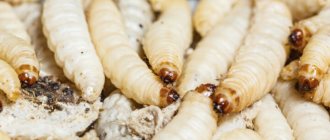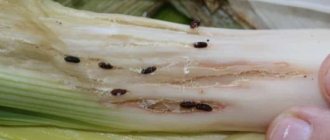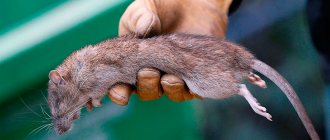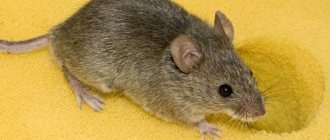One of the most famous and versatile fishing baits at the moment is the maggot. You can easily find it in fishing stores or make it yourself at home. This bait is used in winter and summer and is suitable for a huge variety of freshwater fish.
Often, fishing using maggots becomes more fruitful than fishing with worms or plant bait.
Breeding at home
Maggot for fishing is made at home as follows:
- Take 200 grams of fish or meat.
- Cut into pieces the size of a matchbox and place in a plastic bag.
- We tie it tightly. This is necessary in order to speed up the decomposition process.
- Leave in a warm place for a day.
- The temperature must be at room temperature, otherwise the meat will simply go rotten.
- After a day, the resulting meat is placed in a low container filled with sawdust.
- Cover the container with a cloth so that there are gaps left - flies will fly into them.
- After some time, maggot larvae will appear, all that remains is to feed them.
Young maggots are very active, if you notice they stop moving then your bait will soon turn into a chrysalis, time to use it ASAP!
- You will have to feed the maggot for 3-4 days. There is no point anymore since it stops growing.
- Foods that can be used are foods high in protein - liver, lungs, chicken eggs.
- Feeding proceeds as follows: first, sawdust is poured, then food, and only then the larvae come.
- Don't forget to change the bedding and ventilate the containers.
- After the maggot is ripe, it is placed in the cold until you go fishing.
Tips and tricks on how to get hold of maggots in winter
1.
The surest way to stay with maggots in winter is to prepare them in the warm season and then freeze them. I already talked about how maggots are bred, a little higher. In the warm season, it is enough to place dishes with meat waste outside in an open container, and in a few hours they will be infested with fly eggs, and after 12-48 hours the first larvae will appear. All you have to do is put them in sawdust, sand, flour, grow them to the desired state and freeze them in the refrigerator. When defrosted, the maggot comes to life. In this way, maggots can be stored for a whole season.
2.
If there is a livestock farm nearby, then there are flies there. Try talking to the service staff; perhaps your diplomatic skills will be enough to find a common language with people who will help you in your “difficult” matter.
3.
Slaughterhouses, meat processing plants, etc. In such places, flies are present all year round. It is enough to follow point 2, and you will have maggots
4.
Sometimes, in the basements of houses, a rather favorable atmosphere is maintained, which is quite enough for the existence of flies all year round. In some cases, you can leave your “blanks” in the basement for a while, in the hope that everything will work out. But there are several difficulties here: cats, rats, mice, which can successfully use all your meat for other purposes, so you will have to think about where to place the dishes.
It is easy to conclude that the most acceptable and technically simplest way to obtain maggots in winter is the method under point 1. Don’t be too lazy to devote several days to this matter in the summer so that you can enjoy excellent fishing and an excellent catch throughout the winter and spring. I repeat, for city residents such a problem simply does not exist; maggots can be bought in cities at any time of the year.
It turns out that everything is not as complicated and scary as it seems at first glance.
It is noteworthy that you can breed maggots yourself, and prepare them for future use, so that during short winter days you can completely devote yourself to your favorite activity - winter fishing.
Second breeding method
In this case, all work is carried out as in the first option, but it looks more and more aesthetically pleasing. You will need a plastic bottle. Cut it so that you get a glass and a plastic neck. Insert the neck into the glass, first unscrewing the cap and turning it over. Sawdust is poured into the bottom of the glass, about 1 cm thick. The larvae are poured into the inverted neck. After the maggot grows, it will roll down the walls of the neck into the glass. In this case, the larvae need feeding.
House fly
Another name is room. There are 2 subspecies found on the territory of the Russian Federation: Musca domestica domestica (common) and Musca domestica vicina (southern).
Homeland - steppe regions Wed. Asia, but today it is widespread everywhere. Active mainly during the daytime. The life cycle is 8-20 days. Acceptable temperature is 23-25 degrees Celsius.
Important. Some specimens can survive the winter in an unheated room in an inactive state and continue activity as soon as the temperature rises to 10 degrees.
Insects are carriers of gastrointestinal diseases, tuberculosis, worms, and eye diseases. May cause serious tissue damage (myiases)
Morphology
Three sections of the body: chest, abdomen, head - are densely covered with hairs. The body of an adult is 6-8 mm, gray in color. The lower part of the abdomen is yellowish, along the top of the chest there are 4 longitudinal stripes.
On the chest there are three pairs of five-segmented limbs. The last segment has suction cups that help it move along walls and ceilings. The organs of taste and touch are also located here.
There are large compound eyes on the head, followed by 3 simple ocelli. The distance between the eyes is smaller in males than in females. In front are antennae, which are designed for orientation in space and sense of smell.
Licking-sucking oral apparatus - proboscis and jaws. Flies can only consume liquid food; solid food is first dissolved in saliva. Therefore, contrary to speculation, they cannot pierce human skin and drink blood. During the period of egg maturation, the female switches to protein food. How do flies appear?
Gallery: maggots for fishing (25 photos)
Laying eggs
How are houseflies born? It all starts with mating. Males use sounds made by their halteres to attract females. Individuals copulate.
For oviposition, the female chooses places that are most favorable for this stage of fly development: manure, human waste, carrion, cesspools, rotten meat, spoiled fruits and vegetables. Through the ovipositor, which is located at the end of the abdomen, it can lay 70-120 white eggs approximately 1.2 millimeters long at a time. Depending on the weather, representatives of the order Diptera are capable of laying up to 2 thousand eggs throughout their lives.
For a note. Not all insects manage to survive at all stages of development, hence such high fertility. Next, postembryonic development begins, which occurs in stages.
Hooking
It is very important to place the larva on the hook correctly! The puncture should go in the place of the head at the level of the eyes. There are several ways to do this: only part of the larva’s body is hooked or the entire body is hooked longitudinally.
Many species of fish are interested in the presented bait. The classic option for catching large specimens is several maggots on a hook. If you see that, for example, after the bream’s work, only the skins of the larvae remain, it’s time to plant new maggots. You will see that the bite will become much better.
If the bite is active, the back of 1-3 larvae is pierced. If there is little interest from the fish, the best option is to pierce through it. Important! The tip of the hook must be outside the maggot, otherwise the fish will likely escape.
Common mistakes
If you pass the larva through the middle of the body, it will quickly disappear. You need to prick the hook in such a way as to preserve the integrity of the skin.
When choosing a suitable larva, you should prefer young maggots. Their distinctive feature is the presence of a black dot at the tip of the narrow part. Those that are about to become adult insects do not have such a point.
When the maggot is reused, the hook cannot be threaded in another place. It is advisable to use the same hole as the first time.
What kind of fish will be interested in bait?
Maggots grown at home are a tasty morsel mainly for peaceful fish. These are roach, crucian carp, redeye and carp. The effect of maggots is almost the same as that of a dung worm.
Sometimes the larva is also of interest to predators. Fishing occurs with both float and bottom tackle. You can learn more about the secrets of bottom rigging in our previous publications. Maggots are often used as bait.
Maggot is a popular bait among fishermen, but it is best to prepare it at home. There are several ways to breed bait. The main thing is to seize the moment and prevent the larvae from pupating. Both peaceful and predatory fish are interested in the bait. Among other things, maggots are often used as bait.
Sandwich attachment with other attachments
When used in conjunction with other attachments, they usually first catch the maggots by the head, then move them back. Another bait is attached to the tip - for example, a corn grain. You can also, for example, first attach the maggot with a stocking, move it back, and then the bloodworm by its segment. The sandwich-shaped bait allows you to most effectively combine several types of bait.
Maggot and worm sandwich
Pupa stage
The most passive period in fly breeding. The membrane hardens and a puparium is formed. Pupae cannot tolerate heat (over +40 degrees) and high humidity. If the ground does not dry out for a long time after rain, they die. Therefore, during the rainy seasons there are few flies.
Under favorable conditions, the tissues in the cocoon disintegrate and changes in the whole organism occur. After about 5 days at a temperature of +25 degrees, an adult individual appears - an imago, which after 36 hours is capable of reproducing offspring.
By summing up the time allotted by nature for each stage, you can find out how quickly house flies reproduce: from one week to a month.











